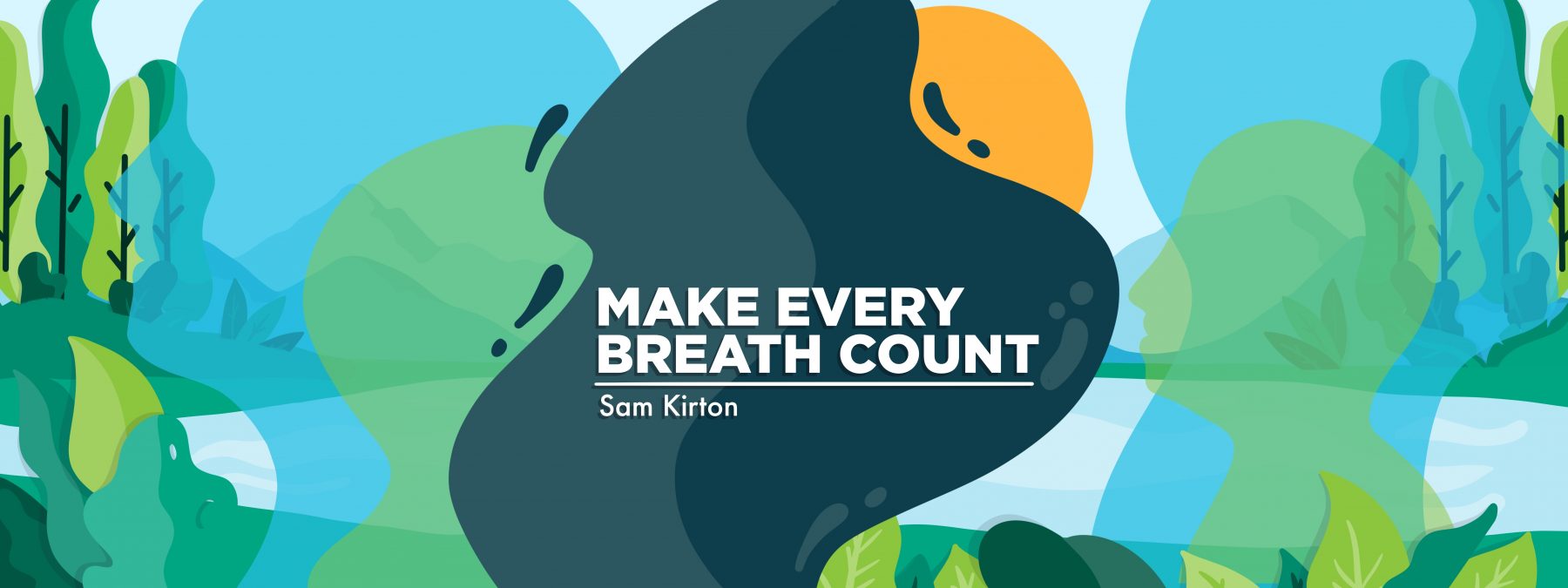Navigating a new comorbidity, 2 years after my lung transplant
Routine medical surveillance reveals cardiac issues for columnist Sam Kirton
Written by |

The idiopathic pulmonary fibrosis (IPF) journey is, if nothing else, full of surprises. Some of those surprises come in the form of comorbidities, which could be a result of age, a suppressed immune system, or simply luck of the draw. The comorbidities we face are as unique as we are.
Those pursuing a transplant typically undergo many tests to identify any potential contraindications. In my experience, a care team will work to resolve or mitigate those issues, if possible.
But what happens when a new comorbidity appears post-transplant?
Medical surveillance
When I was diagnosed with IPF in January 2017, I was seen in the clinic every four to six weeks. The period between visits was often punctuated by various examinations and tests. On July 10, 2021, I received a bilateral lung transplant.
A few weeks ago, on July 14, I had my two-year follow-up at Inova’s Advanced Lung Disease and Transplant Center. The clinic conducts a more in-depth post-transplant checkup at these annual appointments.

A certificate recognizing the second anniversary of my bilateral lung transplant. (Courtesy of Sam Kirton)
One change most transplant patients willingly accept is a lifetime of medical surveillance. While I work hard to protect my donor lungs from the hazards of day-to-day living, I must rely on my care team to oversee many other aspects of my health.
For example, my care team orders an annual CT scan to identify any changes in my lungs, as well as an echocardiogram to assess my blood flow and cardiac function. I also undergo regular dual-energy X-ray absorptiometry, or DEXA, scans to measure my bone density. I was diagnosed with osteopenia, or low bone mass, as a result of daily prednisone use.
My team assesses all of this to ensure my gifted lungs aren’t put at risk by another condition.
A new challenge
This year, that surveillance paid off. My doctor’s notes on my echocardiogram results read, “There is mild to moderate holosystolic aortic regurgitation due to annular dilation.”
According to my research, aortic regurgitation, or AR, occurs when the heart’s aortic valve doesn’t close properly, resulting in a backflow of blood.
My team at Inova recommended I see my cardiologist to explore possible treatments or corrective procedures.
No need to panic
Fortunately, I already had an appointment with my cardiologist, Dr. Behnam Tehrani, scheduled for Aug. 17. Dr. Tehrani performed two double heart catheterizations on me in support of my pretransplant work-up at Inova.
After reviewing several reputable sources, I had trouble quantifying how common this condition is in post-transplant IPF patients. What I did learn is that even though AR is a progressive condition, it can be managed and potentially corrected. An assessment by a cardiologist is a necessary first step.
Like any chronic disease, AR’s progression will vary with each individual. According to the Mayo Clinic, this condition may develop slowly over decades or very suddenly. Sudden-onset AR is often attributed to infection of the valve.
In mild cases, the cardiologist may simply monitor the condition for signs it’s getting worse. Some patients may need to take medications to lower blood pressure. My AR is mild to moderate, and I’m already on two different blood pressure medications. There are several echocardiograms in my records that Dr. Tehrani can look at to see how my condition has progressed, though this recent visit was the first time it’s been a concern.
I’m not sure what he’ll recommend for me, but I know that aortic valve repair or replacement can be an option in more severe cases.
Wait for further analysis
Researching medical information while awaiting an appointment requires reliable resources. Finding false or misleading information can create stress and anxiety. If you’re waiting on an appointment and notice changes in your condition, contact your care team immediately.
Further analyzing this new comorbidity and developing a plan to address it are my next steps in ensuring I continue to make every breath count.
Note: Pulmonary Fibrosis News is strictly a news and information website about the disease. It does not provide medical advice, diagnosis, or treatment. This content is not intended to be a substitute for professional medical advice, diagnosis, or treatment. Always seek the advice of your physician or other qualified health provider with any questions you may have regarding a medical condition. Never disregard professional medical advice or delay in seeking it because of something you have read on this website. The opinions expressed in this column are not those of Pulmonary Fibrosis News or its parent company, Bionews, and are intended to spark discussion about issues pertaining to pulmonary fibrosis.








Leave a comment
Fill in the required fields to post. Your email address will not be published.